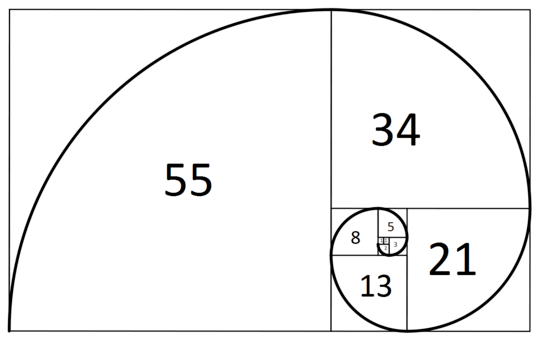37
5
Your goal is to generate a Fibonacci spiral with numbers.

Example Input / Output
1 -> 1
2 -> 1 1
3 -> 1 1
2 2
2 2
6 -> 8 8 8 8 8 8 8 8 5 5 5 5 5
8 8 8 8 8 8 8 8 5 5 5 5 5
8 8 8 8 8 8 8 8 5 5 5 5 5
8 8 8 8 8 8 8 8 5 5 5 5 5
8 8 8 8 8 8 8 8 5 5 5 5 5
8 8 8 8 8 8 8 8 1 1 3 3 3
8 8 8 8 8 8 8 8 2 2 3 3 3
8 8 8 8 8 8 8 8 2 2 3 3 3
Input The input can be taken through STDIN or function argument. It will be a single number
Output The output can be from STDOUT or a function's return value. It should be a single string.
Extra whitespace at the very end of the line is not allowed. The output can contain digits, linefeeds (newlines), and spaces.
Orientation does not matter, this means rotations and reflections. As long as it follows a valid Fibonacci spiral pattern.
Numbers with different amounts of digits (e.g. 1 and 13) should be right-aligned with each other. A space may need to be added to the very beginning of a line so everything can line up.
1 1 1 1
100 100 should actually be 100 100
You can see an example here
This is code-golf so shortest code in bytes wins!
4Related challenge (and a very cool clock) – Sp3000 – 2015-07-18T21:19:22.857
Numbers with different amounts of digits (e.g. 1 and 13) should be aligned to the left side of the digit a space may need to be added to the very beginning of a line so everything can line up.This sounds like it might be clearer as two sentences. – trichoplax – 2015-07-18T21:42:10.040It looks from the examples that you want the rightmost digit of each number to be aligned, but "aligned to the left side of the digit" sounds like the opposite. – trichoplax – 2015-07-18T21:43:38.703
Can you clarify "surrounding whitespace is not allowed"? In particular - is leading or trailing whitespace on the lines acceptable? – MtnViewMark – 2015-07-19T11:51:55.637
Matlab prints output to stdout by default. Is it acceptable to have numeric-type output (as opposed to string-type output) that gets automatically printed to stdout? – Luis Mendo – 2015-07-19T13:06:16.067